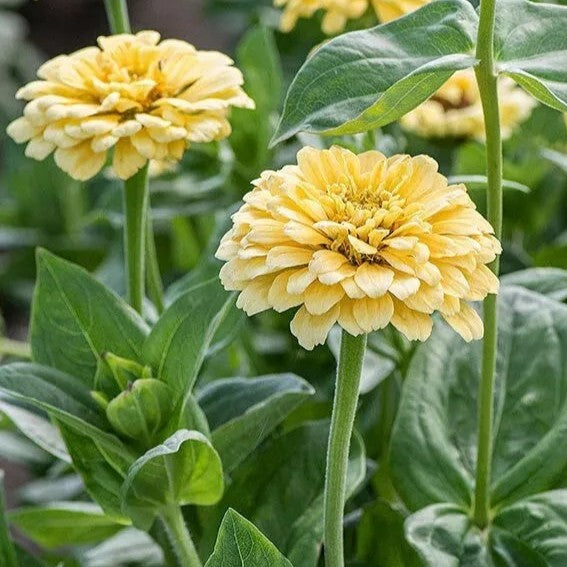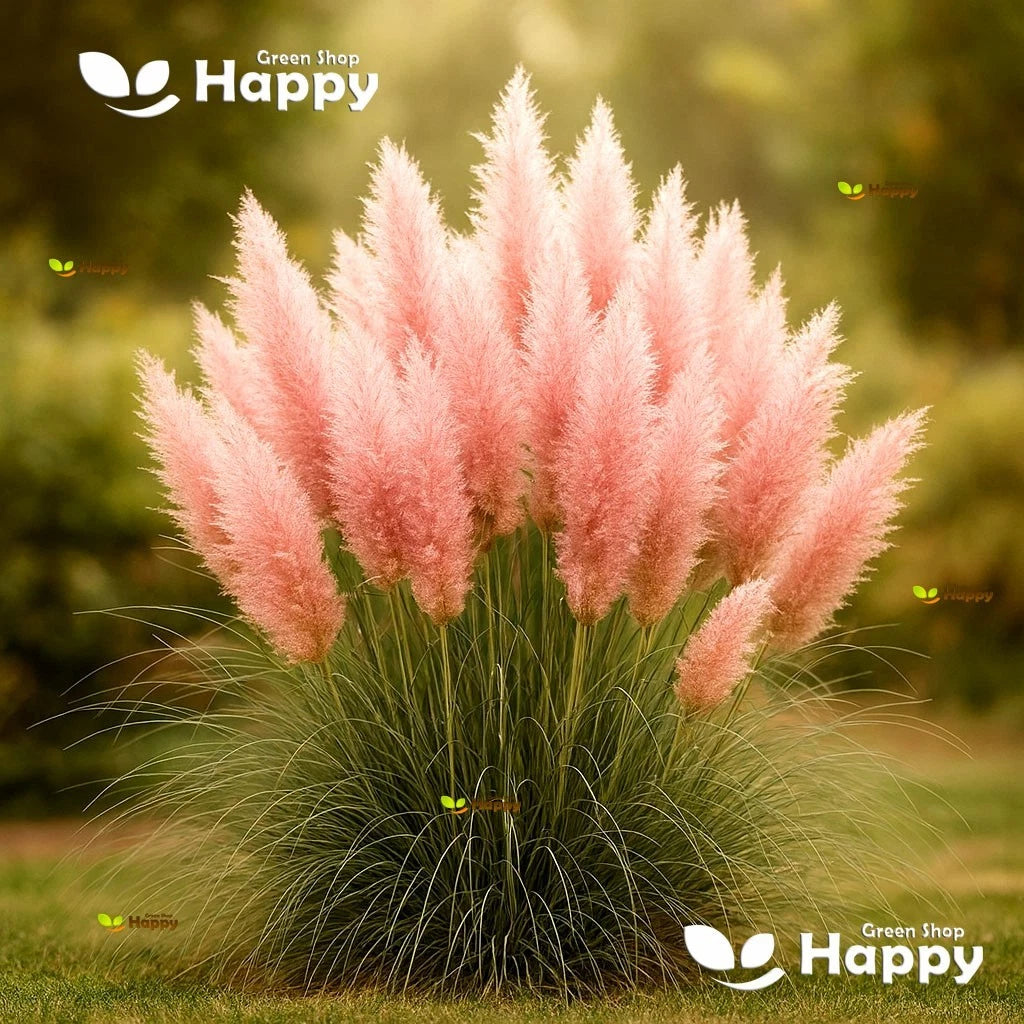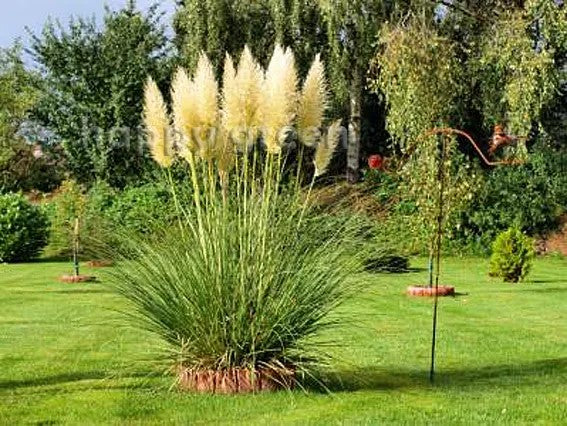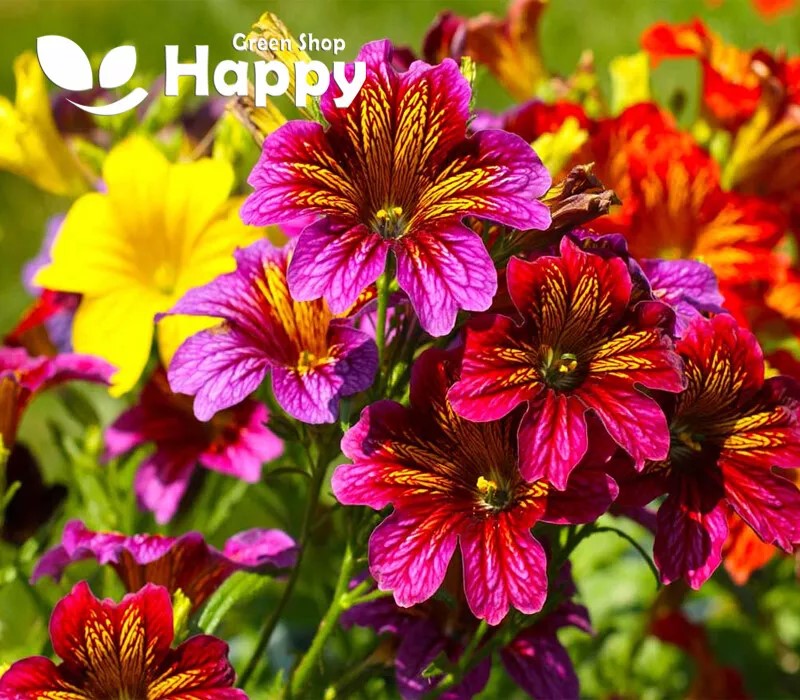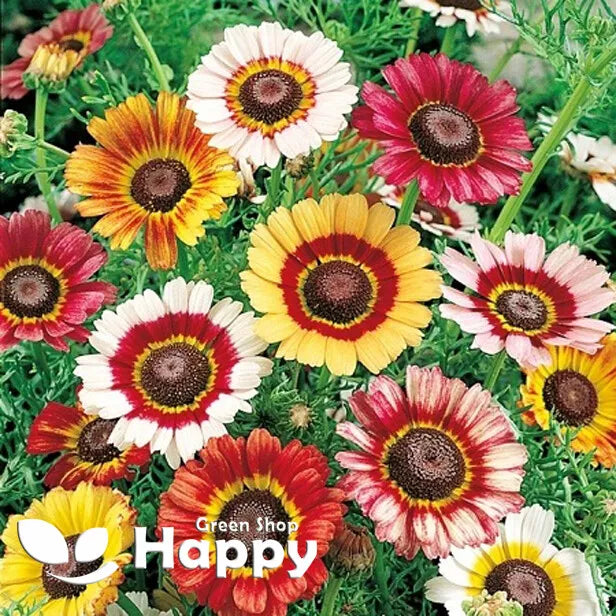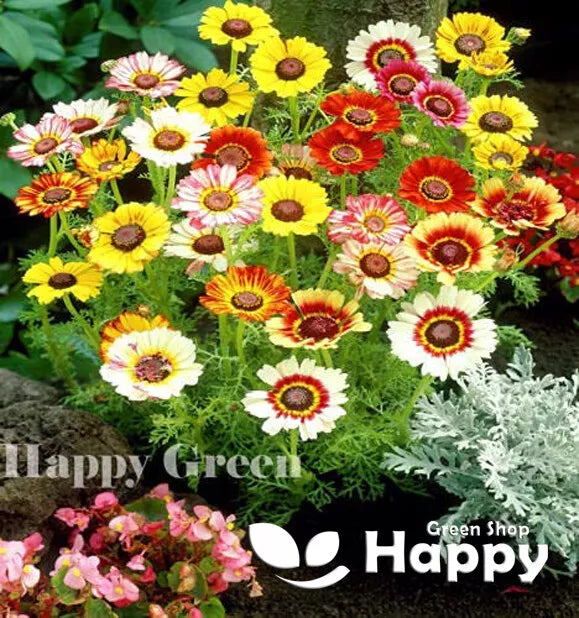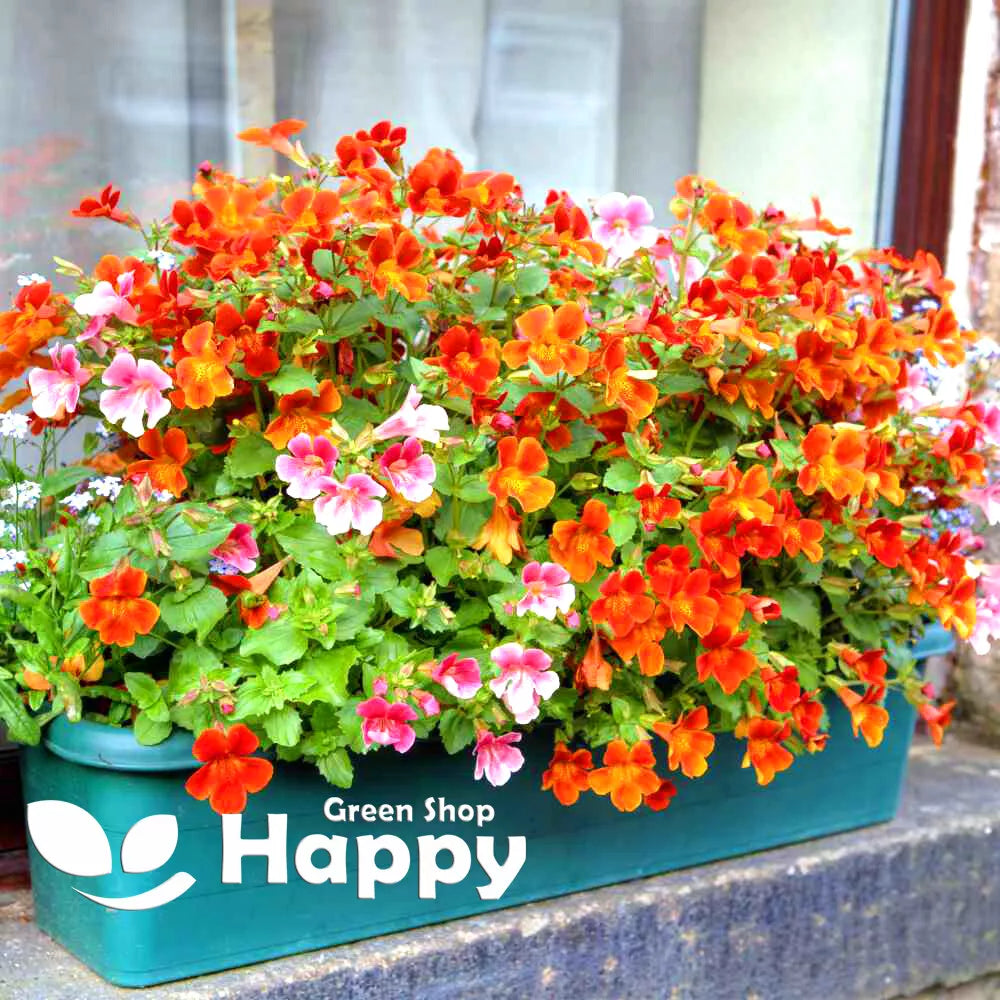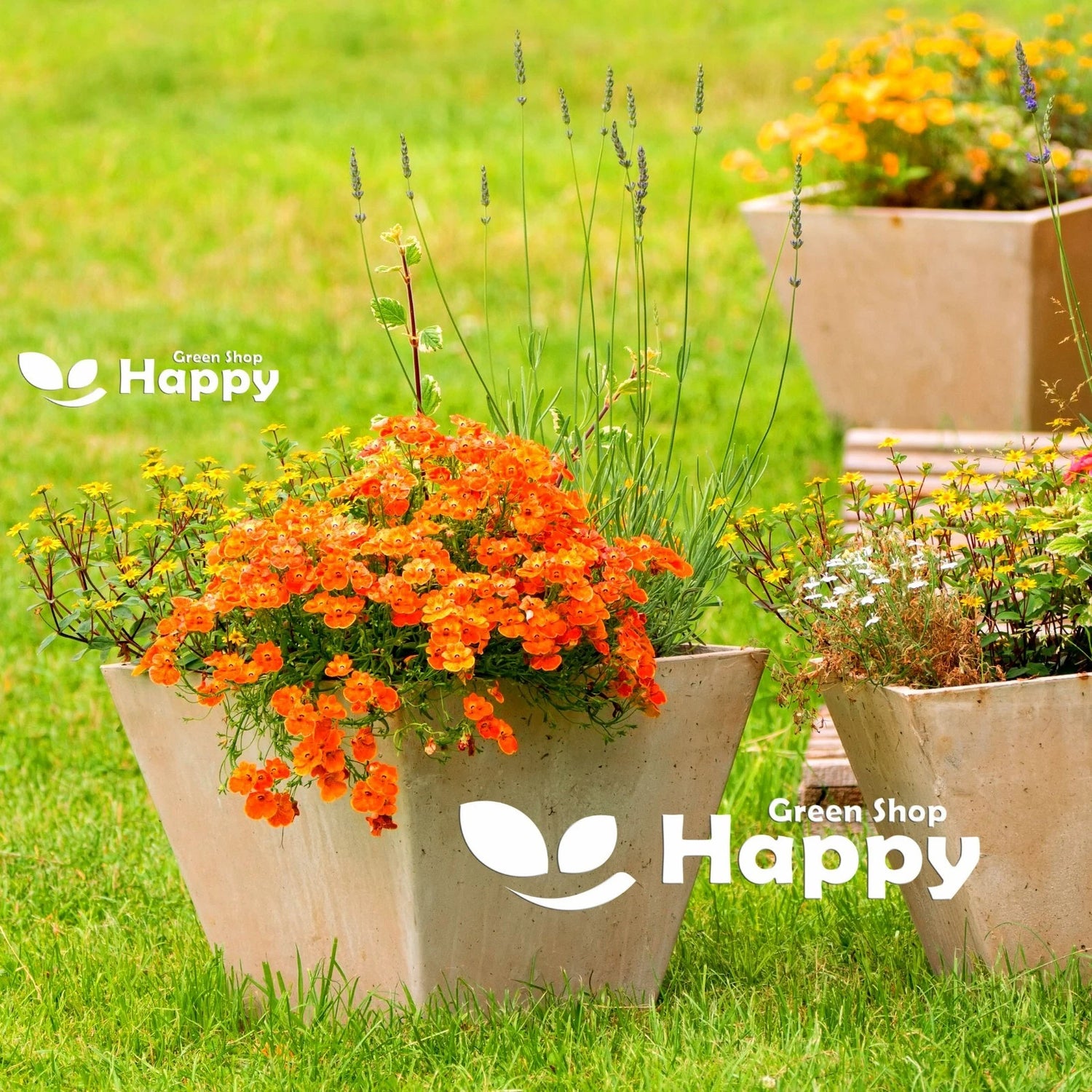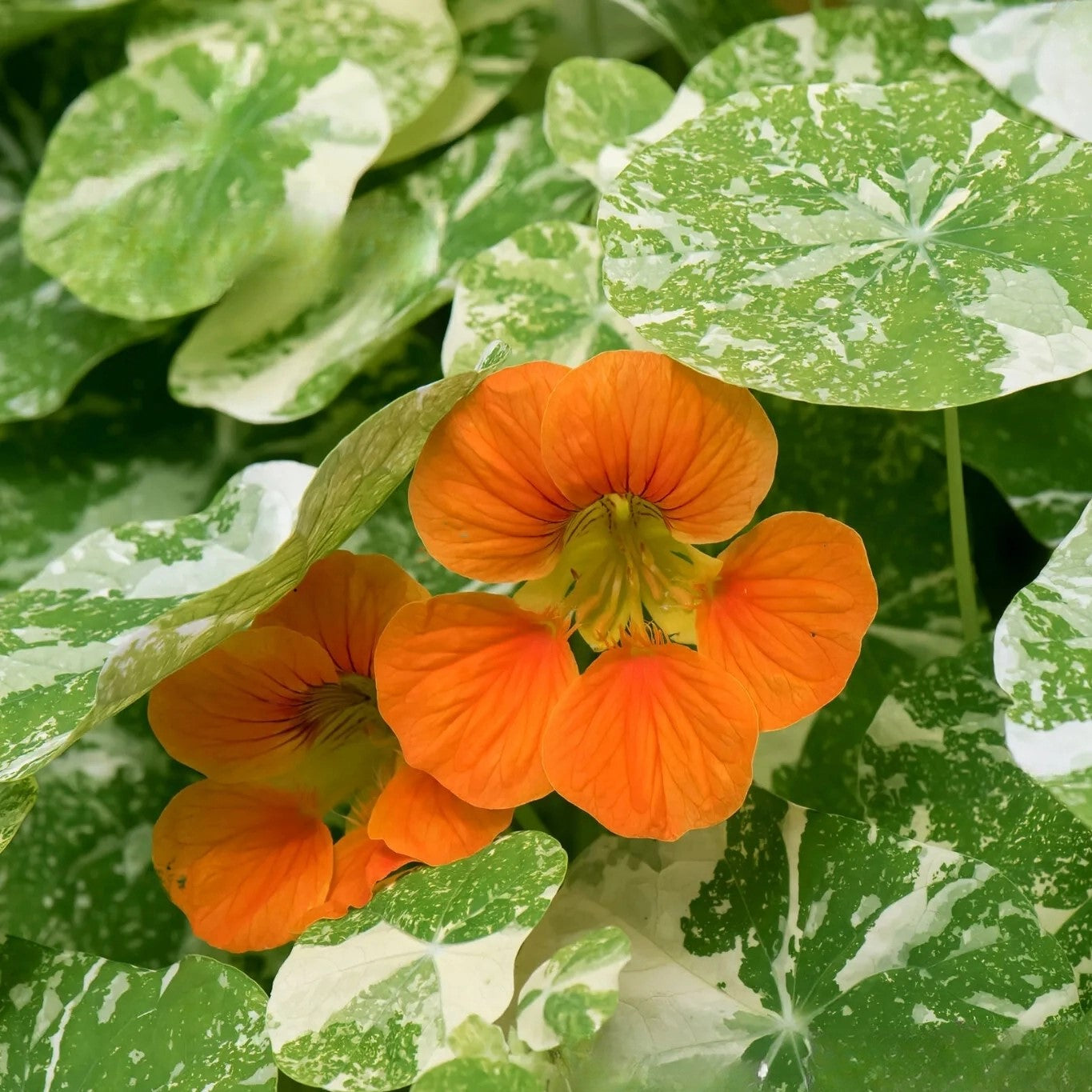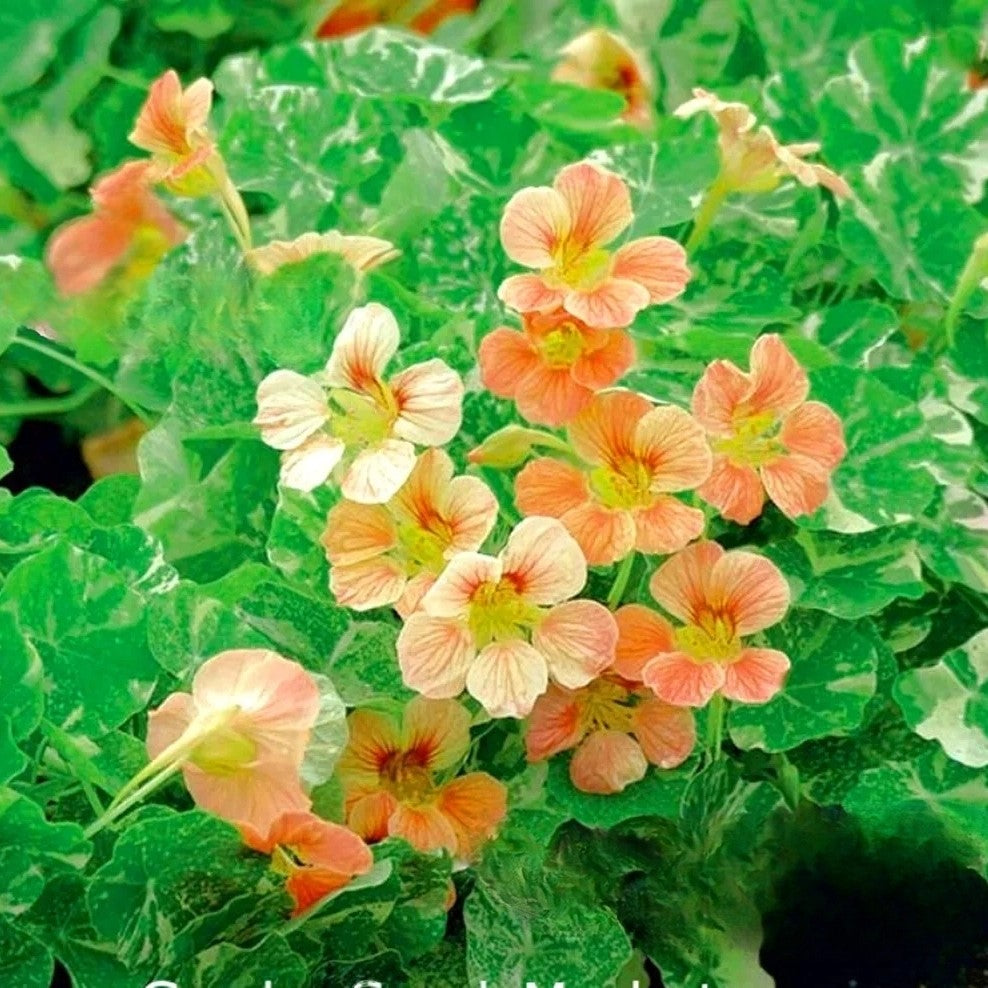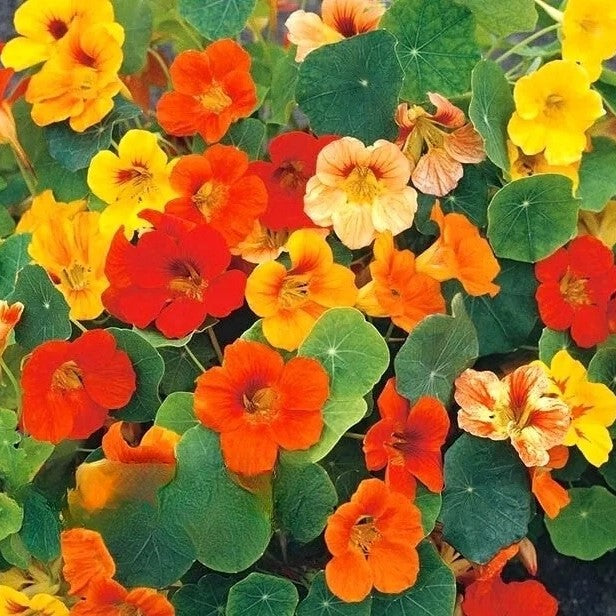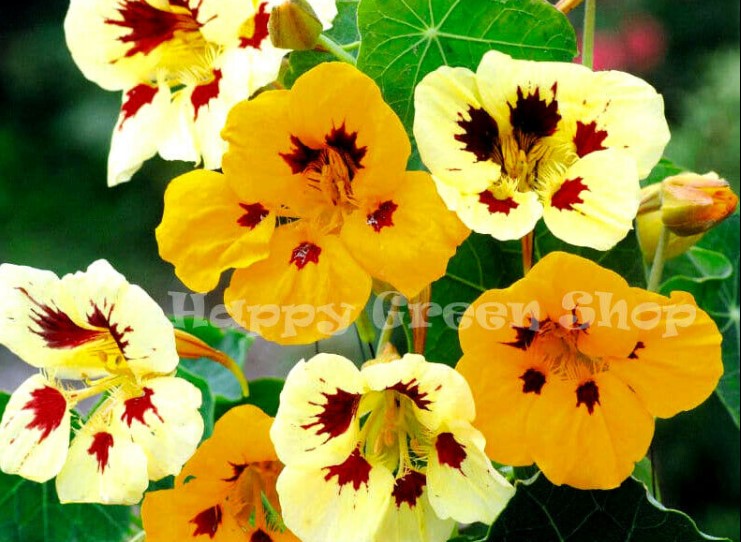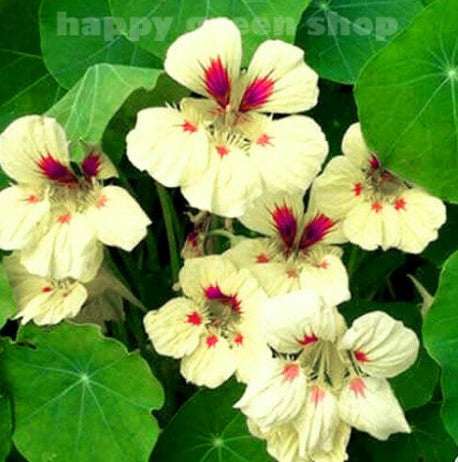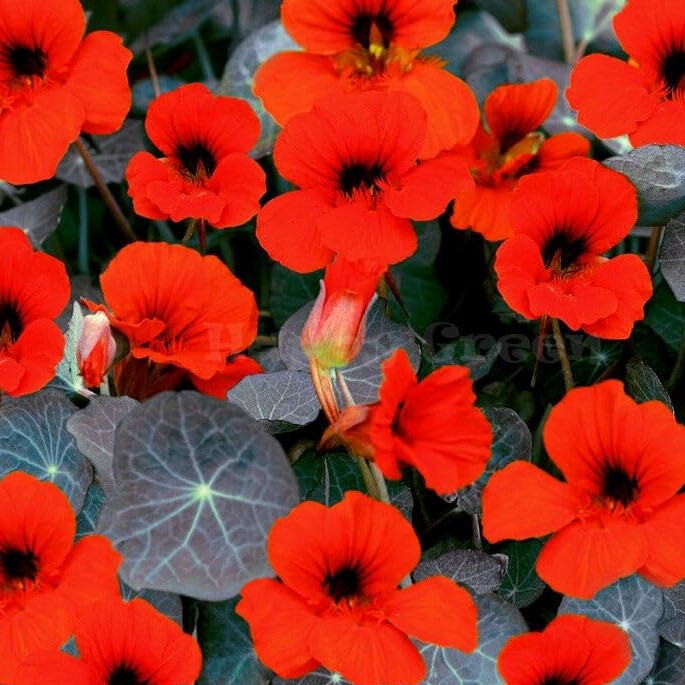Sort by:
180 products
180 products
Pampas Grass Pink Seeds (Cortaderia selloana)
Pampas Grass in soft pink shades is a spectacular ornamental grass, perfect for creating a bold yet elegant focal point in any garden. The tall plumes add height, texture, and movement to borders, while their delicate blush tones make them highly sought-after for floral arrangements and home décor.
What Makes It Special
-
Stunning pink-tinged plumes for a unique twist on the classic Pampas
-
Adds drama and structure to landscapes and garden borders
-
Drought-tolerant and hardy once established
-
Excellent for cutting, drying, and modern interior decoration
Key Features
-
Botanical name: Cortaderia selloana
-
Common name: Pampas Grass (Pink)
-
Seed count: Approx. seeds per pack
-
Height/Spread: Up to 2–2.5 m tall, 1.5–2 m spread
-
Position: Full sun; fertile, well-drained soil
-
Flowering period: Late summer to autumn
-
Lifespan: Hardy perennial
Ideal For
-
Dramatic garden focal points
-
Architectural and modern garden design
-
Coastal and drought-tolerant landscapes
-
Cutting and drying for long-lasting pink arrangements
-
Large borders, backdrops, or statement plantings
Sowing Instructions
-
When to sow: February–April indoors, or May–June outdoors after frost
-
How to sow:
-
Sow seeds on the surface of moist compost, do not cover (light needed for germination)
-
Maintain 18–22°C; germination in 2–4 weeks
-
-
Transplant: Pot on seedlings when large enough to handle
-
Planting out: Harden off before planting in a sunny, sheltered position with space to grow
-
Care: Water young plants well; once mature, Pampas Grass becomes drought-tolerant. Cut back old foliage in late winter to encourage fresh growth.
Pampas Grass Seeds (Cortaderia selloana)
Pampas Grass is one of the most iconic ornamental grasses, valued for its dramatic height, lush foliage, and striking feathery plumes that sway elegantly in the wind. A real statement plant, it is perfect as a focal point in gardens, borders, or large containers. Its plumes can also be dried and used in floral arrangements, wreaths, and modern interior décor.
What Makes It Special
-
Tall, architectural grass with stunning feathery plumes
-
Creates dramatic structure and movement in the garden
-
Drought-tolerant and hardy once established
-
Plumes can be cut and dried for long-lasting indoor decoration
Key Features
-
Botanical name: Cortaderia selloana
-
Common name: Pampas Grass
-
Seed count: Approx. seeds per pack
-
Height/Spread: Up to 2.5 m tall, 1.5–2 m spread
-
Position: Full sun; fertile, well-drained soil
-
Flowering period: Late summer to autumn
-
Lifespan: Hardy perennial grass
Ideal For
-
Garden focal points and landscaping
-
Large borders and wildlife-friendly planting
-
Coastal gardens (tolerates wind and salt)
-
Architectural garden design
-
Cutting and drying for indoor decoration
Sowing Instructions
-
When to sow: February–April indoors, or May–June outdoors after frost
-
How to sow:
-
Sow on the surface of moist seed compost – do not cover (needs light to germinate)
-
Keep at 18–22°C, germination may take 2–4 weeks
-
-
Transplant: Move seedlings to individual pots when large enough to handle
-
Planting out: Harden off and plant outdoors in a sunny, sheltered spot with space to grow
-
Care: Water young plants well. Once established, Pampas Grass is drought-tolerant. Cut back old foliage in late winter to make way for fresh growth.
Painted Tongue 'Superbissima' Mix Seeds (Salpiglossis sinuata)
Painted Tongue 'Superbissima' is a striking annual known for its large, trumpet-shaped blooms with intricate veining in a vibrant mix of colors. Its upright, bushy habit and long flowering season make it perfect for borders, containers, and cutting gardens. Loved for its dramatic patterns, it adds elegance and color to any garden.
What Makes It Special
-
Large, trumpet-shaped flowers with intricate veining in mixed colors
-
Long-flowering, adding continuous color throughout summer
-
Upright, bushy growth habit ideal for borders and containers
-
Excellent for cut flowers and ornamental displays
Key Features
-
Botanical name: Salpiglossis sinuata
-
Variety: 'Superbissima' Mix
-
Seed count: Approx. seeds per pack
-
Height/Spread: 50–70 cm tall, 30–40 cm spread
-
Position: Full sun; fertile, well-drained soil
-
Flowering period: June–October
Ideal For
-
Borders and beds for vibrant color
-
Containers, window boxes, and patio displays
-
Cutting gardens and floral arrangements
-
Pollinator-friendly plantings
Sowing Instructions
-
When to sow: February–April indoors; March–May outdoors
-
How to sow:
-
Sow seeds on the surface of moist seed compost and press lightly; do not cover
-
Germination in 10–14 days at 18–22°C
-
-
Transplanting: Plant seedlings 30–40 cm apart after frost
-
Care: Water moderately; remove faded flowers to encourage continuous blooming
Painted Daisy Rainbow Mix Seeds (Chrysanthemum carinatum)
The Painted Daisy Rainbow Mix is a spectacular annual flower producing bold, daisy-like blooms in a wide range of colors—reds, pinks, yellows, whites, and bicolors, often with striking contrasting rings around the center. These cheerful flowers not only brighten up beds and borders but also make wonderful, long-lasting cut flowers. Easy to grow, they thrive in most garden soils and add a true splash of rainbow color throughout the summer.
What Makes It Special
-
Striking multi-colored blooms with bold ring patterns
-
Easy to grow, fast-flowering annual
-
Excellent for cut flowers and garden displays
-
Provides long-lasting summer color
Key Features
-
Botanical name: Chrysanthemum carinatum (also known as Glebionis carinata)
-
Variety: Rainbow Mix
-
Seed count: Approx. seeds per pack
-
Height/Spread: 50–70 cm tall, 25–30 cm spread
-
Position: Full sun; well-drained soil
-
Flowering period: June–September
Ideal For
-
Borders and cottage gardens
-
Pollinator-friendly planting (attracts bees & butterflies)
-
Vibrant cut flower arrangements
-
Summer bedding displays
Sowing Instructions
-
When to sow: March–May indoors or direct outdoors after frost risk has passed
-
How to sow:
-
Sow thinly on fine, moist compost, covering lightly with soil
-
Germination takes 7–14 days at 15–20°C
-
-
Transplanting: Harden off seedlings and plant outdoors 25–30 cm apart
-
Care: Water regularly in dry weather, deadhead to prolong flowering
Nemesia 'Prince' Orange – Seeds
(Nemesia strumosa)
Nemesia 'Prince' Orange produces masses of fiery orange blooms that add a splash of brilliance to beds, borders, containers, and window boxes. Compact and free-flowering, it is perfect for summer displays, offering a long blooming season and a cheerful burst of color.
Why Grow Nemesia 'Prince' Orange?
-
Bright, vibrant orange blooms with strong garden presence
-
Compact habit – great for containers and bedding
-
Long-flowering from early summer through autumn
-
Easy to grow and care for
Key Features
-
Type: Half-hardy annual
-
Height: 20–25 cm
-
Spread: 20–25 cm
-
Blooms: June–October
-
Position: Full sun to partial shade
-
Soil: Fertile, well-drained soil
Ideal For
-
Bedding schemes
-
Patio pots & containers
-
Edging paths & borders
-
Bright summer garden displays
Sowing & Growing
-
Sow indoors: February–April in trays or pots
-
Lightly cover seeds, keep moist, and maintain warmth (15–20°C)
-
Transplant seedlings when large enough to handle
-
Harden off and plant outdoors after frost risk has passed
-
Space plants 15–20 cm apart
-
Deadhead to prolong flowering
Nasturtium 'Tom Thumb Alaska Salmon' Seeds (Tropaeolum nanum)
Add a splash of elegance with Nasturtium 'Tom Thumb Alaska Salmon'. Compact and easy to grow, this variety features salmon-pink blooms against striking variegated foliage, creating a stunning contrast in borders, containers, or hanging baskets.
What Makes It Special
-
Unique salmon blooms with decorative marbled leaves
-
Dwarf, compact habit—perfect for small spaces
-
Edible flowers and leaves with a peppery flavor
Key Features
-
Botanical name: Tropaeolum nanum
-
Half-hardy annual
-
Height: 20–30 cm
-
Spread: 25–30 cm
-
Flowering: June–September
Ideal For
-
Containers, window boxes, and borders
-
Edible gardens and companion planting
-
Adding vibrant color to small spaces
Sowing
-
Sow indoors: March–April, 1 cm deep in pots or trays
-
Germination: 10–14 days at 15–18°C
-
Harden off and transplant after last frost in sunny spot
-
Direct sow outdoors: April–May in final position
Nasturtium 'Honolulu' Seeds (Tropaeolum nanum)
Nasturtium 'Honolulu' is a charming dwarf annual with bright, cheerful flowers in shades of red, orange, and yellow. Its compact growth habit makes it ideal for containers, window boxes, and small garden beds. Easy to grow and low-maintenance, it adds a splash of vibrant color while attracting pollinators.
What Makes It Special
-
Bright, cheerful blooms in red, orange, and yellow
-
Compact, dwarf growth ideal for small spaces and containers
-
Easy to grow and low-maintenance
-
Attracts pollinators like bees and butterflies
Key Features
-
Botanical name: Tropaeolum nanum
-
Variety: 'Honolulu'
-
Seed count: Approx. seeds per pack
-
Height/Spread: 15–25 cm tall, 20–30 cm spread
-
Position: Full sun; well-drained soil
-
Flowering period: June–September
Ideal For
-
Containers, window boxes, and small garden beds
-
Borders and edging
-
Pollinator-friendly gardens
-
Brightening patios and terraces
Sowing Instructions
-
When to sow: March–May indoors or outdoors
-
How to sow:
-
Sow seeds 1–2 cm deep in seed trays or directly in pots
-
Germination occurs in 7–14 days at 18–22°C
-
-
Transplanting: Plant seedlings outdoors after frost, spacing 15–20 cm apart
-
Care: Water moderately; remove faded flowers to encourage continuous blooming
Nasturtium ‘Lady Bird’ Mix – Seeds (Tropaeolum majus nanum)
The Nasturtium ‘Lady Bird’ Mix is a charming dwarf blend with bright golden-yellow blooms beautifully flecked and spotted with deep red. Compact and free-flowering, this variety is ideal for borders, edging, and containers, while also being edible—both flowers and leaves add color and flavor to summer salads.
Why Grow ‘Lady Bird’ Mix?
-
Unique yellow blooms with striking red markings
-
Compact, bushy habit – perfect for small spaces
-
Long-lasting summer flowers
-
Edible flowers and leaves with a peppery taste
Key Features
-
Type: Half-hardy annual
-
Height: 25–30 cm
-
Flowering: June–October
-
Position: Full sun, poor to average soil
-
Uses: Borders, pots, window boxes, edible gardens
Ideal For
-
Bright edging in garden beds
-
Patio pots and window boxes
-
Edible landscapes and salad garnishes
Sowing & Growing
-
Sow indoors: March–April in pots or trays
-
Sow outdoors: April–June directly in soil
-
Germination: 10–14 days at 15–20°C
-
Space plants 20–25 cm apart
-
Prefers poor soil for best flowering
Nasturtium ‘Empress of India’ – Seeds (Tropaeolum nanum)
Nasturtium ‘Empress of India’ (Tropaeolum nanum) is a vibrant annual with striking deep red and dark foliage. Its trailing habit makes it perfect for containers, hanging baskets, and garden borders. Edible flowers and leaves add a peppery flavor to salads and garnishes, while the plant attracts pollinators, creating both beauty and utility in your garden.
Why Grow "Empress of India"
-
Deep red blooms with dark, attractive foliage
-
Trailing habit ideal for containers and hanging baskets
-
Edible flowers and leaves with a peppery taste
-
Attracts bees, butterflies, and other pollinators
Key Features
-
Type: Annual (Tropaeolum nanum)
-
Height: 20–30 cm
-
Flowering: June–September
-
Position: Full sun to partial shade
-
Uses: Containers, hanging baskets, borders, edible garden
Ideal For
-
Edible and ornamental garden planting
-
Hanging baskets and container displays
-
Pollinator-friendly gardens
-
Borders and small garden beds
Sowing & Growing
-
Sow indoors: March–April in trays or pots
-
Sow outdoors: After last frost in prepared soil
-
Germination: 7–14 days at 18–22°C
-
Thin seedlings to 20–25 cm apart
-
Prefers well-drained soil and sunny positions
-
Deadhead to encourage continuous flowering
Showing 72/180




